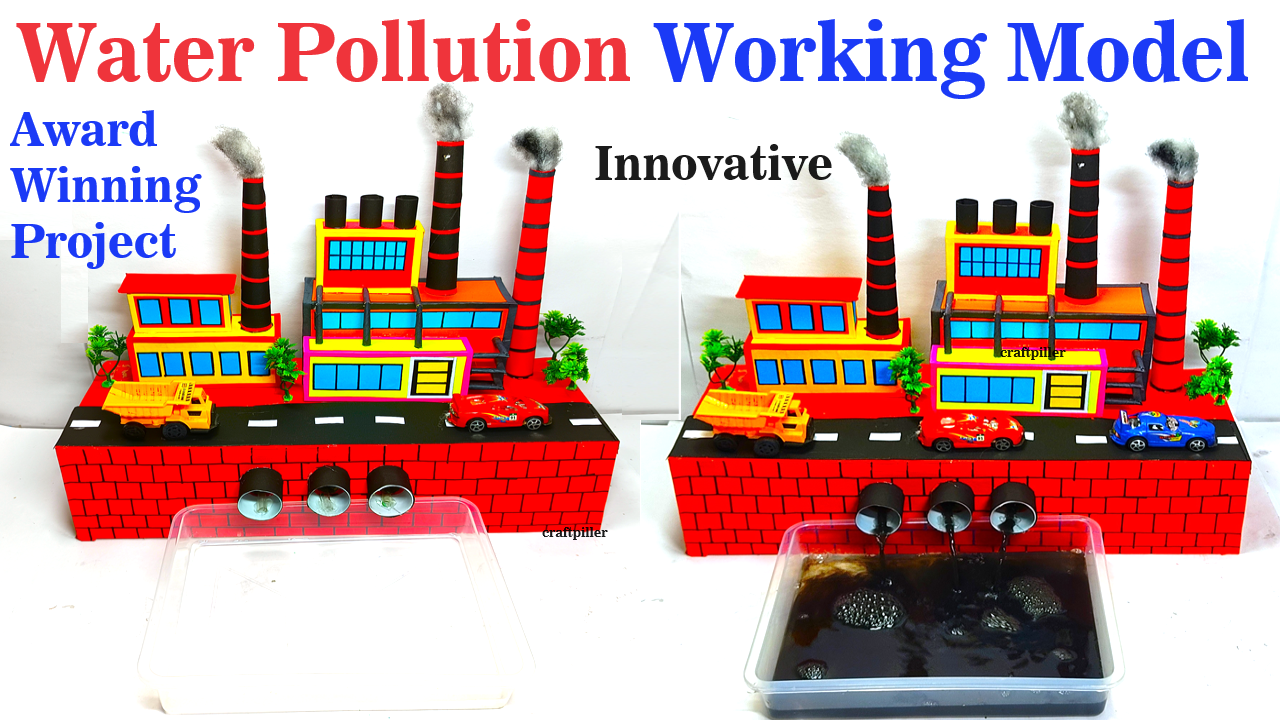A water pollution working model demonstrates how harmful substances contaminate water bodies and showcases ways to reduce or prevent pollution. This simple project helps us understand the effects of pollution on water and highlights the importance of keeping it clean.

How It Works
The model consists of a small setup representing a water body, such as a lake or river, along with sources of pollution like factories, houses, and farms. Here’s how it is explained:
- Pollution Sources:
- A factory model emits pollutants like oil, chemicals, or smoke into a nearby water body. This is demonstrated using colored liquids (like dye) or oil poured into the water.
- Houses or apartments discharge wastewater and trash into the water, shown by adding small pieces of paper, plastic, or detergent foam.
- Farms contribute pollutants through fertilizers and pesticides, simulated using powdered materials like flour or baking soda.
- Effects of Pollution:
- The water becomes visibly dirty, representing how pollutants harm aquatic life and make water unsafe for use.
- This can be explained as a danger to fish, plants, and even humans who depend on clean water.
- Solutions to Pollution:
- Include a filtration system (gravel, sand, and cotton) to clean the polluted water, showing how water treatment works.
- Add a recycling setup where wastewater is treated and reused for irrigation, reducing wastage.
Importance of the Model
The model teaches how daily human activities affect water quality. It encourages practices like proper waste disposal, using eco-friendly products, and adopting water-saving habits.
By understanding water pollution through this working model, we can spread awareness and take steps to preserve our precious water resources for future generations.

